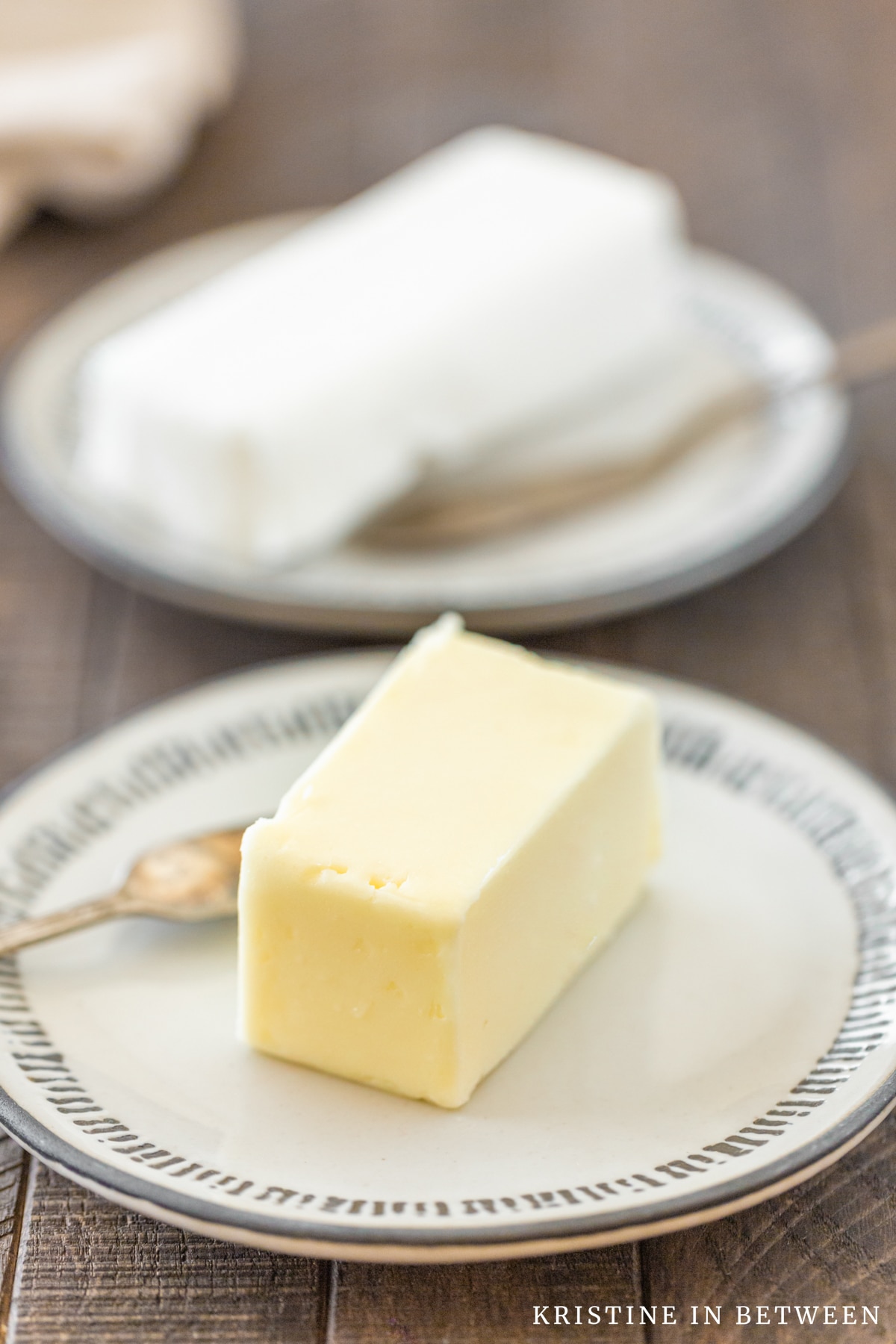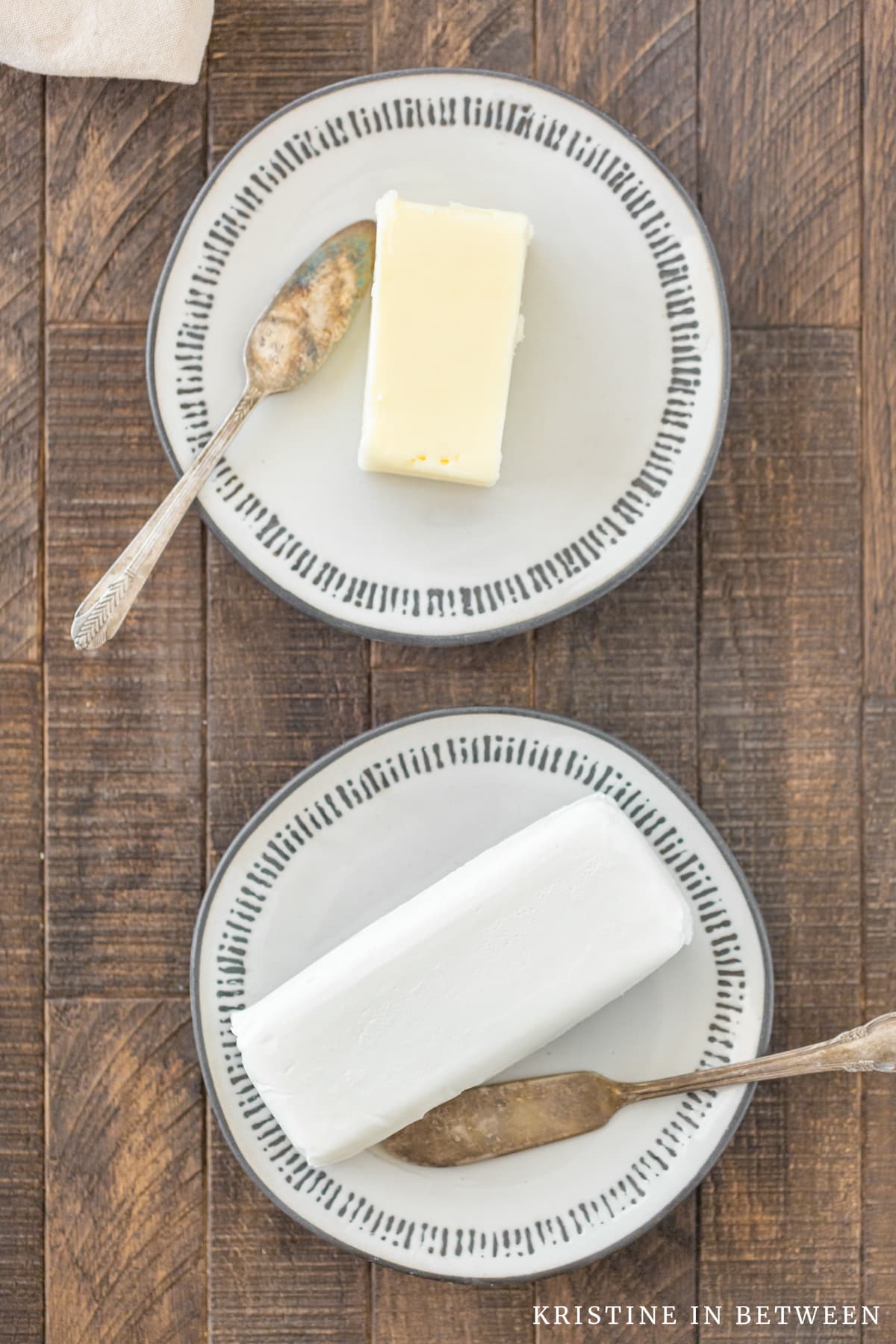Hello friends! Today we’re talking all about substitutions. Mainly how to substitute butter for shortening.
Substituting butter for shortening in a recipe, or vice versa, can be done, but it’s essential we understand how each fat behaves and its potential impact on the final result, so we know exactly what to expect. Let’s go over the basics on how to make the substitution.

Substituting Butter for Shortening:
- 1:1 Ratio: In many recipes, you can substitute butter for shortening in a 1:1 ratio. This means that for every cup of shortening called for in the recipe, you use a cup of butter.
- Adjust Liquid: Since butter contains some water (about 15-20%), you may need to slightly reduce the liquid content in the recipe to maintain the desired texture. Start by reducing the liquid by about 2 tablespoons per cup of butter used and adjust as needed based on the recipe’s consistency.
- Consider Flavor: Keep in mind that butter has a rich, dairy flavor, while shortening is neutral. Substituting butter for shortening may add a buttery taste to your baked goods, which can be desirable in some recipes but may alter the flavor profile.
- Texture: Be aware that the texture of your baked goods may change when using butter instead of shortening. Butter has a lower melting point, which can lead to spreading in cookies and a softer texture in pie crusts.

Substituting Shortening for Butter:
- 1:1 Ratio: You can often substitute shortening for butter in a 1:1 ratio, meaning for every cup of butter, use a cup of shortening.
- Adjust for Flavor: Since shortening is flavorless, this substitution may result in a different flavor profile in your baked goods. Consider adding a small amount of salt or other seasonings to compensate for the lack of buttery flavor.
- Texture: Shortening has a higher melting point than butter, which can affect the texture of your baked goods. You may notice increased tenderness and a different texture. This can be beneficial in recipes where flakiness is desired.
- Check for Moisture: Keep an eye on the moisture level in your recipe. Shortening doesn’t contain water like butter does, so you may need to make slight adjustments to the liquid content if the recipe seems too dry.
Remember that while these substitutions can work in many recipes, they may not yield identical results to the original ingredient. It’s a good idea to experiment, make small adjustments, and taste-test to ensure the final product meets your expectations.
And remember to think about how the taste and feel of the baked good might change, and if that works with recipe you’re making.


These are some great tips and tricks! Definitely saving this post the next time I’m in a pinch and run out of shortening!
Thank you so much, Sara! Glad you found it useful.
Thank you for this information. Great to use in future recipes.
You bet, Biana. Hope you get some good use out of it.
Very useful tips and tricks. Thanks for sharing.
Thank you, you bet – I’m just trying to help the people out. Glad you found it useful.
This was such a helpful guide!! Will definitely be coming back to this the next time I need to substitute one of these for the other when I’m baking!
Thank you! I’m so glad you found it useful.
Great guide! I never use shortening, always butter but am never sure how to actually substitute it properly!
I don’t often either Ali, but I’ve found it can be useful for different types of recipes and textures. I figured if I had to Google the answer, I should have a post about here, haha!